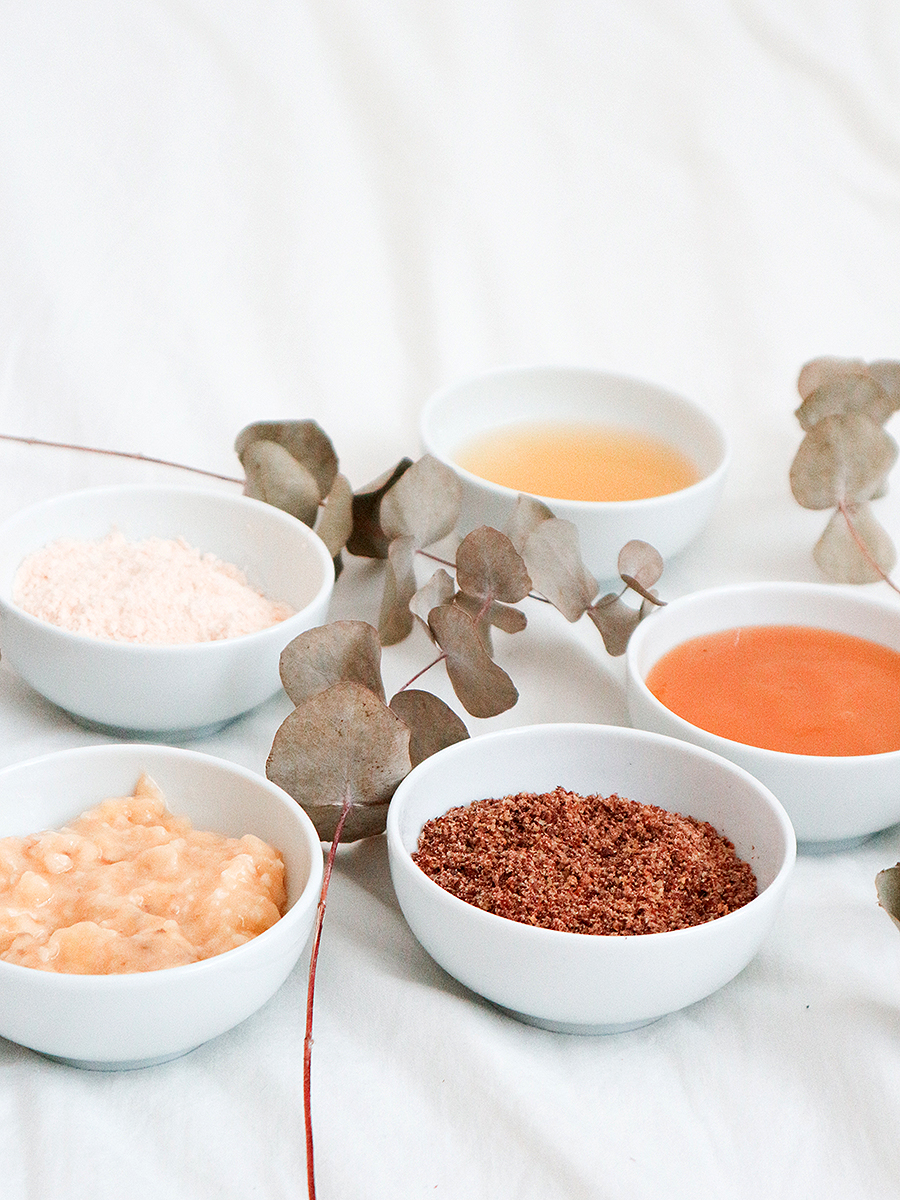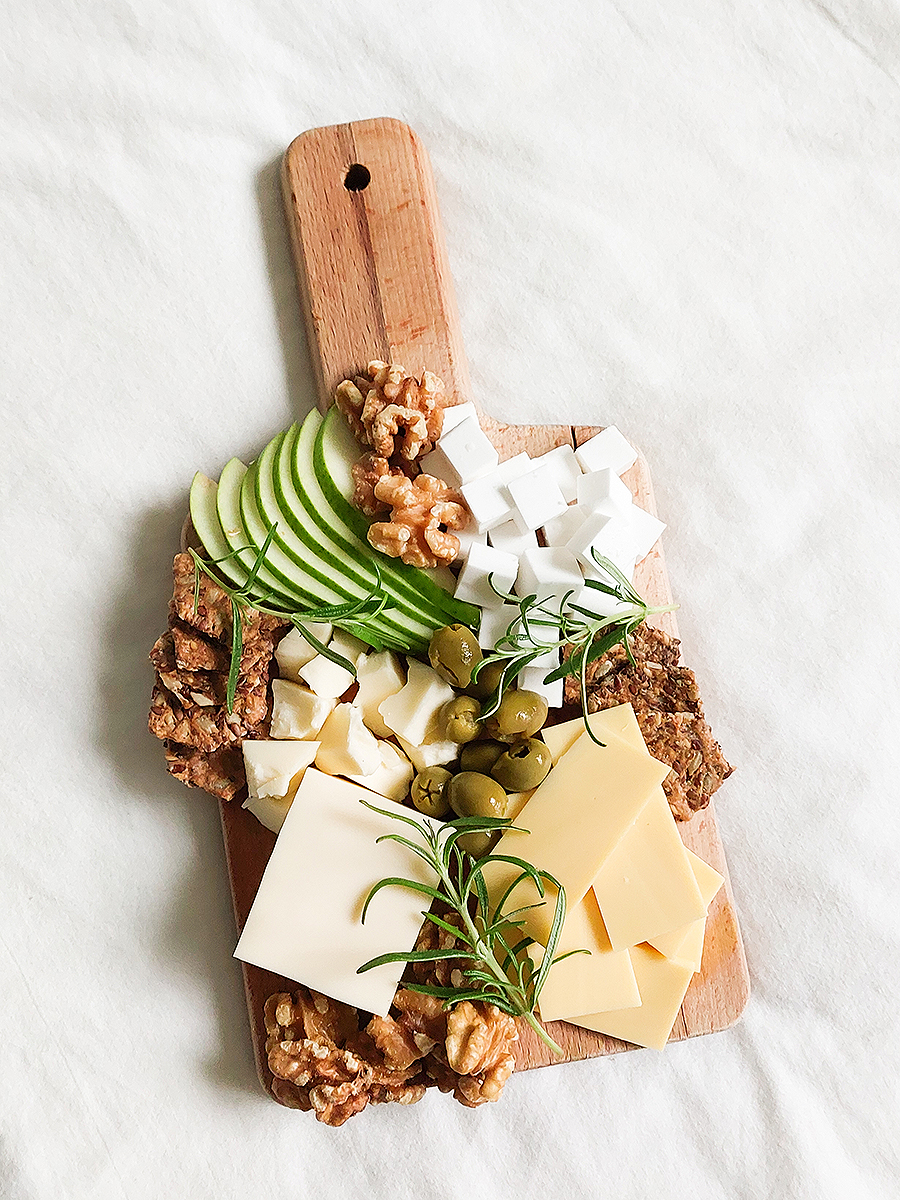
Eggs are missing only in a few households. They have versatile use in the kitchen – we eat them for breakfast, lunch and dinner, in any cooked-alternative, they’re an integral part of desserts and cakes. They have many benefits – they contain few calories, up to 12% is protein and they are a source of vitamin D and B12. They are relatively easy to digest, and even assumptions that they increase “bad” cholesterol levels in the blood were proved to be false (but the fact remains that one egg contains up to two-thirds of the recommended daily cholesterol intake, but since the liver then produces less of its own cholesterol, the level is balanced).
As well as the meat and the dairy industry, egg production hides a terrible reality that no one is talking about. And the problem is not only in mass production, but also in small-scale one.

Since I strongly doubt that somebody remembers in detail the anatomy of the domestic chicken and specifically its reproductive system, I will start with that. Although the reproductive system of hens is different from ours, the beginning is the same – the egg cell is released from the ovary, which travels through the oviduct (where fertilization can occur); then it’s covered in layers of protective substances, the last one being the hard shell from calcium.
Many years ago, the chickens had 12 – 13 eggs a year. For the only purpose – to have all the eggs fertilized, from which little chicks could hatch. But then, a man got hold of a chicken and found out, that besides meat, the eggs are edible as well; also that the chicken lays eggs even if they aren’t fertilized.
A short simple interpolator for those who don’t understand how it works – the hens lay eggs for the purpose of having young, but they lay them even without a rooster; because the released egg doesn’t know if it’ll be fertilized in the oviduct or not. The principle is therefore exactly the same as reproduction in humans, and chicken eggs can be compared to menstruation. In the wild, the hen would be fertilized – and after the chicken has around a dozen eggs, it sits on them, keeping the eggs at a constant temperature, so the chicks can hatch. Even a fertilized egg is edible – if it is taken immediately by the breeder and stored in a cool room, it won’t hatch.
As I mentioned earlier, the hens used to have only a few eggs a year, nowadays they lay them every 24 to 48 hours, so about three hundred eggs a year; thanks to breeding, which ensured that the hens lay eggs even in winter (otherwise they didn’t, because winter is far from being the ideal season for breeding, since the chicks would freeze), but mainly because the hens are not in the same space as the roosters (and there’s no fertilization), and people take the eggs from them every day (that is, even if fertilization occurs and the egg is laid, it waits until there’s around twelve of them). Again, we get to the point that eggs are definitely not intended for humans – and hens lay eggs for themselves, or more so to survive as species.
Most of the eggs we eat in Slovakia are from big factory farms – and up to 75% of all eggs sold are from battery cages. It’s the most economical out of all of them, because it allows the storage of individual hens on themselves, hens don’t run under the breeders’ feet, and since everything is automated, collecting the eggs requires minimal effort. But at what price? In cages that damage their feet, are around twenty of them. Each hen has a space smaller than one basic printer paper. They have no room to spread their wings, to walk, they never see the sunlight, they’re under constant stress, which results in feather plucking and attacking.
Indoor husbandry seems to be a better alternative – but it still doesn’t allow hens the ideal living conditions. Hens are in huge halls, where they’re literally thousands of them, and they still have no daylight and enough movement. Therefore, the best is free-range where the chickens can walk on the grass and be outside. However, this increases the cost, which is then reflected in higher egg prices.
As I mentioned, chickens in the factory farms (now I don’t count free-range, which it’s only in 5 percent in Slovakia) are under constant stress. In such situations it’s natural for them to rip out their feathers or attack other hens; but for farmers it’s, of course, undesirable. That’s why they often trim their beaks – although I didn’t find if they do it in factory farms, but they do it in small-scale farms, so the answer is obvious, And as usual, without any anesthesia. When they trim the beak, they often damage the nerves and blood vessels; therefore, eating causes a lot of pain and the hens die of starvation.
Such chickens live for a maximum of two years; although in the wild it would be up to eight. But they’re dying much earlier because of reduced egg production and injuries. Since the egg shell is composed of calcium, the whole laying process is very difficult for the hen’s body – and the body often extracts calcium from the bones, making the skeleton fragile and prone to fractures. In the wild, this problem would not be at all – because hens wouldn’t lay so many eggs, but also because they would eat the unfertilized eggs.
And to make matters worse, as we are only talking about hens, let’s not forget that in this industry, roosters are basically unnecessary – they’re only useful for breeding. And if we assume that 50% of the roosters are born, half of the chicks are useless. There’s no point in keeping them, so they end up in a grinder that literally crushes them alive, or they suffocate them with gas.


Even the small-scale farms aren’t perfect. Even though they aren’t as cruel to hens because they have more space to live, they often have free movement around the garden, so they can walk and be on a fresh air, but some breeding practices remain the same. Beak trimming is recommended by many farmers. Starving the hens is not so unusual either – by decreasing the ammount of food or stopping it for a few days, the egg production will increase.
Purchasing the hens is not normal either. Most households who decide to have chickens also need to have them from somewhere – and most often it’s from a specialized company. And for one chick you pay 52 CENTS. (Can you imagine selling human children at such price?)
And where do the hens end up when they don’t lay enough eggs, have fractures or are simply exhausted? On a plate. In large-scale farms, dead hens are often sold to factories where meat is transformed into products (because such hens don’t have the most beautiful meat and no one would buy it at the supermarket, but it’s still edible); and in villages it’s no different.

The hens wouldn’t survive in the wild without us. Yes and no. If you threw a bred hen which was raised in a cage from the birth and doesn’t even know how the grass or the sun look, into a wild, of course, it wouldn’t survive. But the hens existed in the wild long before people took hold of them. And they didn’t need humas to survive at all.
Again, I’m reminding what I’ve already written in an article on bee keeping and honey production – where do people even have the right to take eggs from hens? To genetically modify them to lay more than twenty times more eggs than it’s normal for them? If this is how the breeding and selling dogs would look like – so they’d be locked in a tiny cage, they’d cut off parts of their bodies, and they’d force them to lay breakfast for people – it would be shut down after one day, because it’d be unacceptable. Who then forced us into thinking that one is okay and the other is not? Why is a chicken less than a dog?
If you have the option, choose other alternatives. And there’s a lot of them – even when baking, as well as for breakfast. Or at least buy eggs from small farms or from free-range chickens; and don’t support violence, inhuman behavior and cruelty. Even animals have feelings and have the same right to live as humans.

Vajíčka chýbajú len v máloktorej domácnosti. V kuchyni majú všestranné využitie – jeme ich na raňajky, na obed i večeru, v akomkoľvek tepelnom upravení, sú neodmysliteľnou súčasťou dezertov a koláčov. Majú mnoho benefitov – obsahujú málo kalórií, až 12% tvoria bielkoviny a sú zdrojom vitamínu D a B12. Sú pomerne ľahko stráviteľné a dokonca aj predpoklady, že zvyšujú hladinu “zlého” cholesterolu v krvi sa ukázali ako nepravdivé (faktom ale ostáva, že jedno vajce obsahuje až dve tretiny odporúčanej dennej dávky cholesterolu, no keďže pečeň potom vytvára menej vlastného cholesterolu, hladina sa ako-tak vyrovná).
Rovnako ako aj mäsopriemysel a mliekárenský priemysel, aj produkcia vajec skrýva hrôzostrašnú realitu, o ktorej nikto nehovorí. A problém nie je iba vo veľkochove, ale aj malochove.

Keďže silne pochybujem, že si niekto detailne pamätá anatómiu kury domácej (teda sliepky) a konkrétne jej reprodukčný systém, začnem práve tým. Hoci rozmnožovacia sústava sliepok je iná ako naša, začiatok je rovnaký – z vaječníka sa uvoľní pohlavná bunka, ktorá putuje vajíčkovodom (kde môže dôjsť k oplodneniu); potom sa obaľuje viacerými ochrannými vrstvami, pričom poslednou je pevná škrupina z vápnika.
Kedysi sliepky znášali v priemere 12 – 13 vajec ročne. Z jediným zámerom – aby boli všetky vajcia oplodnené a mohli sa z nich vyliahnuť kuriatka. No potom sa kury divej zmocnil človek, ktorý zistil, že okrem mäsa sú jedlé aj vajcia; a tiež, že sliepka znáša vajcia aj keď nie sú oplodnené.
Krátka vsuvka napísaná po lopate pre tých, ktorí nevedia, ako to funguje – sliepka znáša vajcia s cieľom mať mladé, no znáša ich aj bez prítomnosti kohúta; lebo uvoľnené vajíčko akoby nevie, či bude vo vajcovode oplodnené alebo nie. Princíp je teda úplne rovnaký ako rozmnožovanie u ľudí a slepačie vajce môžeme prirovnať k menštruácii. Vo voľnej prírode by u sliepok došlo k oplodneniu – a po tom, čo sliepka znesie okolo dvanásť vajec, si na nich sadne, vďaka čomu majú vajcia stálu teplotu a môže sa z nich vyliahnuť kuriatko. Aj oplodnené vajce je jedlé – ak ho chovateľ okamžite vezme a uskladní v chladnom priestore, nedôjde k vyliahnutiu.
Ako som už spomínala – kury kedysi znášali iba zopár vajec do roka, dnes ich znášajú každých 24 až 48 hodín, teda okolo tristo vajec ročne; a to vďaka šľachteniu, ktoré zabezpečilo, že sliepky znášajú vajcia aj v zime (inak ich neznášali, pretože zima ani zďaleka nie je ideálne ročné obdobie na rozmnožovanie, keďže mláďatá by zamrzli), no hlavne vďaka tomu, že sliepky nie sú v jednom priestore s kohútmi (a nedôjde k oplodneniu), a vajcia im ľudia berú každý deň (teda aj keď dôjde k oplodneniu a sliepka vajce znesie, čaká, pokiaľ ich nebude okolo tých dvanásť). Opäť sa teda dostávame k tomu, že vajcia ani náhodou nie sú určené pre ľudí – a sliepky znášajú vajcia pre seba, respektíve preto, aby ako druh prežili.
Väčšina vajec, ktoré na Slovensku konzumujeme, je z veľkochovu – a až 75% všetkých predaných vajec je z klietkového chovu. Ten je najekonomickejší, pretože umožňuje uskladnenie jednotlivých sliepok na sebe, sliepky chovateľom len tak nepobehujú pod nohami, a keďže je všetko automatizované, zber vajec vyžaduje minimálnu námahu. Ale za akú cenu? V klietkach, ktoré im poškodzujú nohy, je ich natlačených okolo dvadsať. Každá sliepka má priestor menší ako je jeden obyčajný kancelársky papier. Nemajú priestor na roztiahnutie krídel, na prechádzanie, nikdy neuvidia denné svetlo, sú pod neustálym stresom, čo má za následok vytrhávanie peria a vzájomné napádanie.
Podstielkový chov sa zdá byť ako lepšou alternatívou – no stále neumožňuje sliepkam ideálne podmienky na život. Kury sú natlačené v obrovských halách, kde ich sú doslova tisíce, stále nemajú denné svetlo a dostatok pohybu. Najlepší je preto voľný chov sliepok s výbehom, kde sa kury môžu prechádzať po tráve a byť vonku. Avšak zvyšujú sa tým náklady, čo sa potom odráža na vyššej cene vajec.
Ako som spomínala, sliepky vo veľkochove (teraz nerátam voľnovýbehový chov, ktorý je na Slovensku zastúpený len v 5 percentách) sú pod neustálym stresom. V takýchto situáciách je pre nich prirodzené vytrhávať si perie alebo útočiť na iné sliepky; no pre chovateľov je to, samozrejme, nežiadúce. Preto im často zastrihávajú zobáky – hoci som nenašla, či zobáky zastrihávajú aj vo veľkochovoch, robia to aj malochovatelia, takže odpoveď je asi jasná. A ako inak, bez anestézy. Pri zastrihnutí sú často poškodené nervy a cievy v zobáku; jedenie preto kure spôsobuje veľkú bolesť a umrie na vyhladovanie.
Takéto sliepky žijú maximálne dva roky; hoci vo voľnej prírode by to bolo až osem. No kvôli zníženiu produkcie vajec a rôznym úrazom umierajú oveľa skôr. Keďže škrupina vajíčka je zložená z vápnika, celý proces znášania je pre telo sliepky veľmi náročný – a organizmus často ťaží vápnik z kostí, kvôli čomu je kostra kury krehká a náchylná na zlomeniny. Vo voľnej prírode (respektíve pri kurách divých) by tento problém vôbec nebol – jednak preto, lebo by sliepky neznášali toľko vajec, ale aj preto, že by neoplodnené vajce zjedli.
No a aby toho nebolo málo, keďže sa stále bavíme iba o sliepkach, nezabúdajme na to, že v tomto priemysle sú kohútikovia v podstate nepotrebný – užitočný sú iba pri rozmnožovaní. A ak predpokladáme, že z narodených kurčiat je 50% kohútov, polovica mláďat je zbytočná. Nemá zmysel ich chovať, preto skončia v drvičke, ktorá ich doslova rozmelie zaživa, alebo ich udusia plynom.


Ani malochov sliepok nie je úplne dokonalý. Hoci k sliepkam nie je taký krutý, pretože majú viac priestoru na život, často majú voľný pohyb po záhrade, a teda sa majú možnosť prejsť a byť na čerstvom vzduchu, ale niektoré praktiky pri chove ostávajú rovnaké. Zastrihávanie zobákov mnohí malochovatelia priam odporúčajú. Nezvyčajnosťou nie je ani vyhladovanie kúr – tým, že znížia sliepkam stravu alebo ju na pár dní úplne zastavia, sa zvýši produkcia vajec.
Normálna nie je ani kúpa sliepok. Väčšina domácností, ktorá sa rozhodne chovať kury, ich tiež musí najprv odniekiaľ mať – a najčastejšie je to od spoločnosti, ktorá je na to špecializovaná. A za jedno kuriatko zaplatíte 52 CENTOV. (Viete si predstaviť, že by sme za takú cenu predávali ľudské deti?)
A kde skončia sliepky, ktoré už neznášajú dostatok vajec, majú zlomeniny alebo jednoducho nevládzu? Na tanieri. Pri veľkochovoch sa mŕtve sliepky často predávajú do závodov, kde mäso premenia na nejaké výrobky (pretože takéto sliepky nemajú práve najkrajšie mäso a v supermarkete by si ho nikto nekúpil, no stále sa dá zjesť); a na dedinách tomu nie je inak.

Sliepky by bez nás vo voľnej prírode neprežili. Áno aj nie. Ak by ste vyšľachtenú kuru, ktorá bola od narodenia zatvorená v klietke a ani len netuší, ako vyzerá tráva alebo slnko, zrazu hodili do lesa, samozrejme, že by neprežila. Ale kury divoké existovali voľne v prírode dávno predtým, ako si ich udomácnili ľudia. A ľudskú pomoc na prežitie vôbec nepotrebovali.
Opäť pripomínam to, čo som už napísala v článku u chove včiel a produkcii medu – kde majú ľudia vôbec právo na to, aby sliepkam brali vajcia? Aby ich geneticky upravovali tak, aby znášali dvadsaťnásobne viac vajec ako je pre nich normálne? Ak by takto vyzeral chov a predaj psov – teda by boli natlačené v klietke, zastrihávali by im časti tela a dookola nútili znášať raňajky pre ľudí – do jediného dňa by bol zrušený, lebo by to bolo neakceptovateľné. Kto nám teda natlačil do hlavy, že jedno je v pohode a druhé nie? V čom je sliepka menej ako pes?
Ak máte možnosť, vyberte si iné alternatívy. A je ich veľa – aj pri pečení, aj ako raňajky. Alebo si aspoň kupujte vajíčka z malochovov alebo od sliepok, ktoré majú voľný výbeh; a nepodporujte násilie, neľudské správanie a krutosť. Aj zvieratá majú city a majú rovnaké právo na život ako ľudia.





